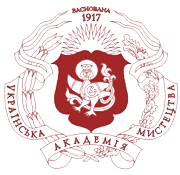SOCIO-CULTURAL FACTORS OF HUMAN IMAGE FORMATION IN ART
DOI:
https://doi.org/10.32782/2411-3034-2022-32-17Keywords:
human image, fine arts, socio-cultural factors.Abstract
Abstract. The article deals with the problem of forming the human image in the fine arts depending on the factors of historical time and its social conditions. The evolution of the human image in art in different historical times is traced in general terms with attention to the relationship between the style of the era and the visual image of the main type of the era. Attention is paid to how art reflects, namely through the image of the figure, the vision of the role of man in society, as well as how the cultural environment forms individual semantic media. The essence of the interaction of society and culture, first of all, is that a certain type of social relations, economic system, political regime, social class structure, religious, ethnic and national relations affect the content and forms of the cultural process and, in particular, the image of art, which dictates specific forms of perception and reproduction of the human image. At the same time, there is a reverse process: culture, in turn, serves as a prerequisite for the radicalization and stabilization of all aspects of social life and thereby ensures the appropriate balance in its transition from one historical and cultural state to another. Therefore, in order to explain the artistic understanding of the era and its leading image of the "hero of the time" in art, it is necessary to consider the influence of social and cultural phenomena on the artist and its reverse influence on the viewer and the social environment as a whole. In fact, a characteristic feature of the modern concept of the acceptability of the human figure is the diversity of views, which come from the existence of a large number of movements, methods of artistic work, expanded tools. Therefore, when art ceased to be a set of rules, there is no form that is regarded as more correct than another. Hence, in modern conditions all existing types of human image can be recognized in aesthetic terms.
References
Вебер М. Протестантська етика і дух капіталізму / пер. з нім. О. Погорілого. Київ : Основи, 1994. 261 c.
Вінкельман Й. Й. Про художній ідеал прекрасного. Київ : Мистецтво, 1990. 307 c.
Гейзінга Й. Homo Ludens. Київ : Основи, 1994. 250 c.
Ґумбрехт Г. У. Розладнаний час / пер. з англ. та нім. І. Іващенко. Харків : Ist Publishing, 2019. 104 c.
Ортега-і-Гасет Х. Бунт мас. Вибрані твори. Київ : Основи, 1994. C. 15–139.
Рассел Б. Історія західної філософії. Київ : Основи, 1995. 759 c.
Сучасна зарубіжна філософія. Течії і напрями : хрестоматія. Київ : Ваклер, 1996. 428 c.
Філософія: світ людини. Київ : Либідь, 2003. 432 c.
Gay P. Modernism: The Lure of Heresy: From Baudelaire to Beckett and Beyond. W W NORTON & CO, 2010. 610 p.
Greenberg C. Avant Garde and Kitsch. The Partisan Review: 1939. P. 34–49.
Kandinsky W. On the spiritual in art. Ed. Hilla Rebay. New York, 1946. 152 p.
Ranciere J. Le partage du sensible. La Fabrique. Paris, 2000. 74 p.
Sorokin P. A. Social and Cultural Dynamics. In 4 Vol. New York : American Book Company, 1937–1941.




